Zfp281 and Zfp148 control CD4+ T cell thymic development and TH2 functions
- PMID: 37948511
- PMCID: PMC12291171
- DOI: 10.1126/sciimmunol.adi9066
Zfp281 and Zfp148 control CD4+ T cell thymic development and TH2 functions
Abstract
How CD4+ lineage gene expression is initiated in differentiating thymocytes remains poorly understood. Here, we show that the paralog transcription factors Zfp281 and Zfp148 control both this process and cytokine expression by T helper cell type 2 (TH2) effector cells. Genetic, single-cell, and spatial transcriptomic analyses showed that these factors promote the intrathymic CD4+ T cell differentiation of class II major histocompatibility complex (MHC II)-restricted thymocytes, including expression of the CD4+ lineage-committing factor Thpok. In peripheral T cells, Zfp281 and Zfp148 promoted chromatin opening at and expression of TH2 cytokine genes but not of the TH2 lineage-determining transcription factor Gata3. We found that Zfp281 interacts with Gata3 and is recruited to Gata3 genomic binding sites at loci encoding Thpok and TH2 cytokines. Thus, Zfp148 and Zfp281 collaborate with Gata3 to promote CD4+ T cell development and TH2 cell responses.
Conflict of interest statement
Figures
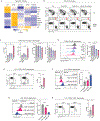
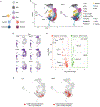

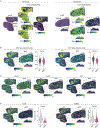

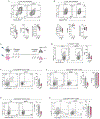
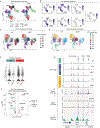
References
-
- Taniuchi I, CD4 Helper and CD8 Cytotoxic T Cell Differentiation. Annual review of immunology 36, 579–601 (2018). - PubMed
-
- Zhu J, Min B, Hu-Li J, Watson CJ, Grinberg A, Wang Q, Killeen N, Urban JF Jr., Guo L, Paul WE, Conditional deletion of Gata3 shows its essential function in T(H)1-T(H)2 responses. Nat Immunol 5, 1157–1165 (2004). - PubMed
Publication types
MeSH terms
Substances
Grants and funding
LinkOut - more resources
Full Text Sources
Molecular Biology Databases
Research Materials

